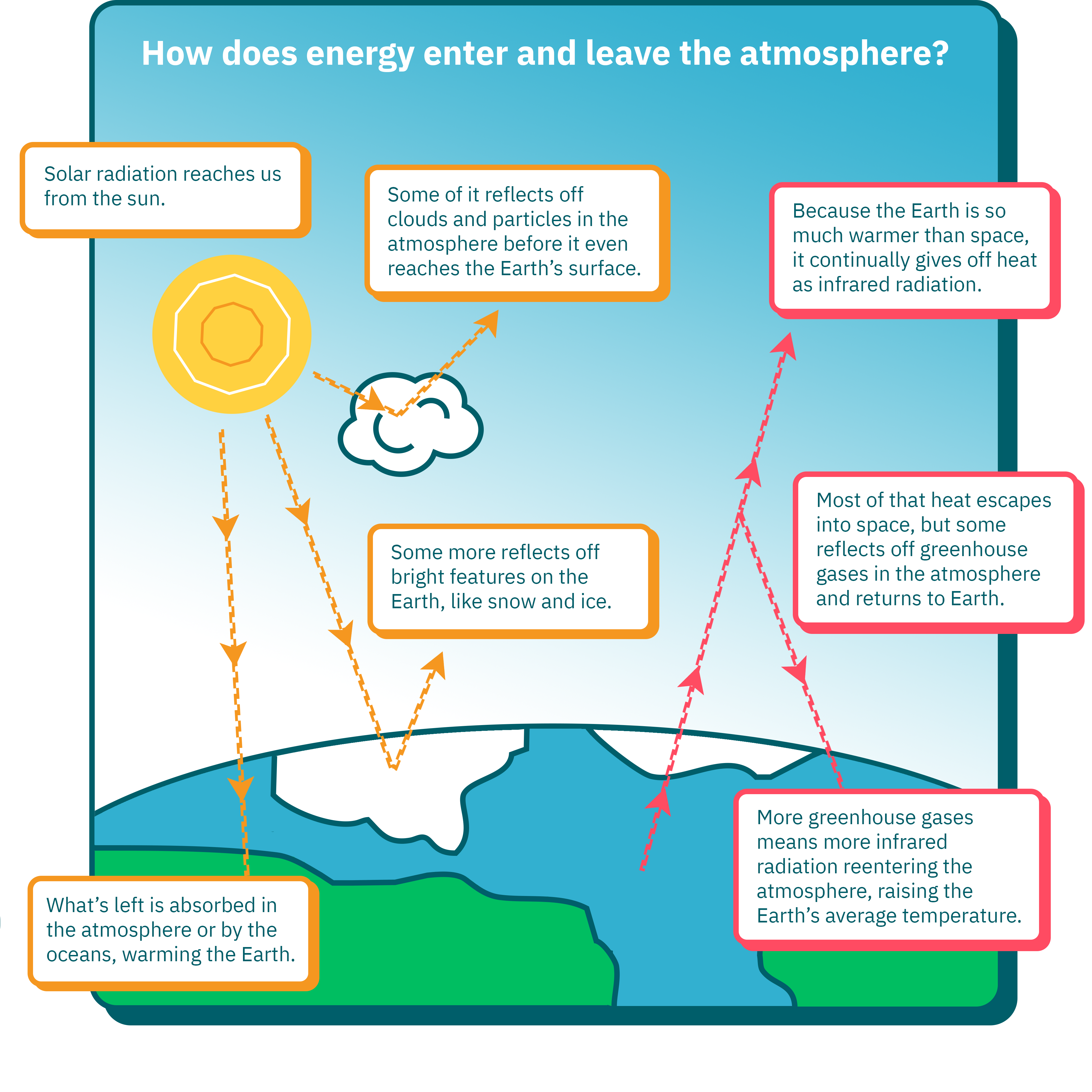 radiation reentering the atmosphere, raising the Earth’s average temperature." width="4000" height="4000" />
radiation reentering the atmosphere, raising the Earth’s average temperature." width="4000" height="4000" />Radiative forcing is what happens when the amount of energy that enters the Earth’s atmosphere is different from the amount of energy that leaves it. Energy travels in the form of radiation: solar radiation entering the atmosphere from the sun, and infrared radiation exiting as heat. If more radiation is entering Earth than leaving—as is happening today—then the atmosphere will warm up. This is called radiative forcing because the difference in energy can force changes in the Earth’s climate.
Sunlight is always shining on half of the Earth’s surface. Some of this sunlight (about 30 percent) is reflected back to space. The rest is absorbed by the planet. But as with any warm object sitting in cold surroundings—and space is a very cold place—some energy from Earth is always radiating back out into space as heat.
Radiative forcing measures how much energy has come in from the sun, compared to how much has left, over a period of time. The analysis needed to pin down this exact number is very complicated. Many factors, including clouds, polar ice, and the physical properties of gases in the atmosphere, have an effect on this balancing act, and each has its own level of uncertainty and its own difficulties in being precisely measured. However, we do know that today, more heat is coming in than going out.
Before the industrial era, incoming and outgoing radiation were in very close balance, and the Earth’s average temperature was more or less stable. For this reason, researchers calculate radiative forcing based on a “baseline” year sometime before the beginning of world industrialization. For example, the Intergovernmental Panel on Climate Change uses 1750 as a baseline year.
Compared to this baseline, radiative forcing can directly measure the ways recent human activities have changed the planet’s climate. The biggest change has been the greenhouse gases we have added to the atmosphere, which keep heat from escaping the Earth. But there have been other changes too. For example, by cutting down forests, we have exposed more of the Earth’s surface to sunlight. If that surface is darker than the forest cover, the Earth absorbs more solar radiation; where it’s lighter, like in the arctic, more sunlight is reflected back into space.
Humans are also adding small particles called aerosols to the air, from smokestacks, airplanes, and the tailpipes of cars. Aerosols make radiative forcing especially hard to measure, because their effects are highly complex and can work both ways. For example, bright aerosols (like sulfates from coal-burning) can help cool the atmosphere by reflecting light, while dark aerosols (like black carbon from diesel exhausts) absorb heat and lead to warming.
Finally, measures of radiative forcing also include any natural effects that have changed since the baseline year, such as changes in the sun’s output (which has caused a little more warming) and aerosols released into the atmosphere by volcanoes (which cause temporary cooling).
 radiation reentering the atmosphere, raising the Earth’s average temperature." width="4000" height="4000" />
radiation reentering the atmosphere, raising the Earth’s average temperature." width="4000" height="4000" />
Updated February 6, 2024. This Explainer was adapted from “Explained: Radiative Forcing” by David Chandler, which originally appeared in MIT News.